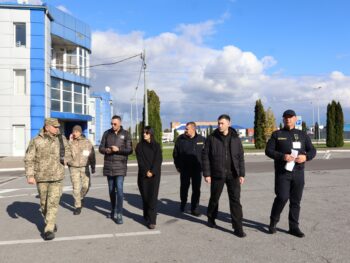In August 2025, Ukraine took several strategic steps in the field of integrated border management. The government approved a draft of the new Customs Code and began consultations with businesses, while the State Customs Service announced the start of development of NCTS Phase 6 and asked the European Commission to extend the transition period until 2026. At the same time, the structure was optimised: the Southern and South-Eastern Customs Offices were created by merging inactive departments. The number of companies with Authorised Economic Operator (AEO) status reached a hundred, and the customs service issued over 100 licences for brokerage activities.
Seasonal peaks were observed at the border: on 3 August alone, 155,000 people crossed it (85,000 entered and 70,000 left), and in July, the total passenger traffic amounted to almost 4.2 million people. At the end of the month, border guards recorded about 150,000 crossings per day, with the intensity of entry exceeding exit by 10-15,000; at the same time, 85% of travellers were citizens of Ukraine. Changes to the border crossing rules, which allowed men aged 18–22 to leave the country, did not significantly affect overall traffic. In foreign trade, turnover grew to $69.1 billion in seven months (45.9 billion in imports and 23.2 billion in exports), while customs revenues reached 65.1 billion hryvnia in July. with the volume of imported goods amounting to 3.6 million tonnes, although the share of taxed imports fell to 85%. Over seven months, 5,682 customs violations were detected, amounting to UAH 6.8 billion.
Stable exports are ensured by the Ukrainian Sea Corridor: over two years, it has transported more than 137 million tonnes of cargo, including 84 million tonnes of agricultural products, by more than 5,300 vessels, supporting food security in 54 countries. The August digest also notes the deepening of cooperation with Canada, Australia and the United Kingdom in the customs and border sphere, as well as the implementation of infrastructure projects on the western and southern borders, despite dependence on external financing.





